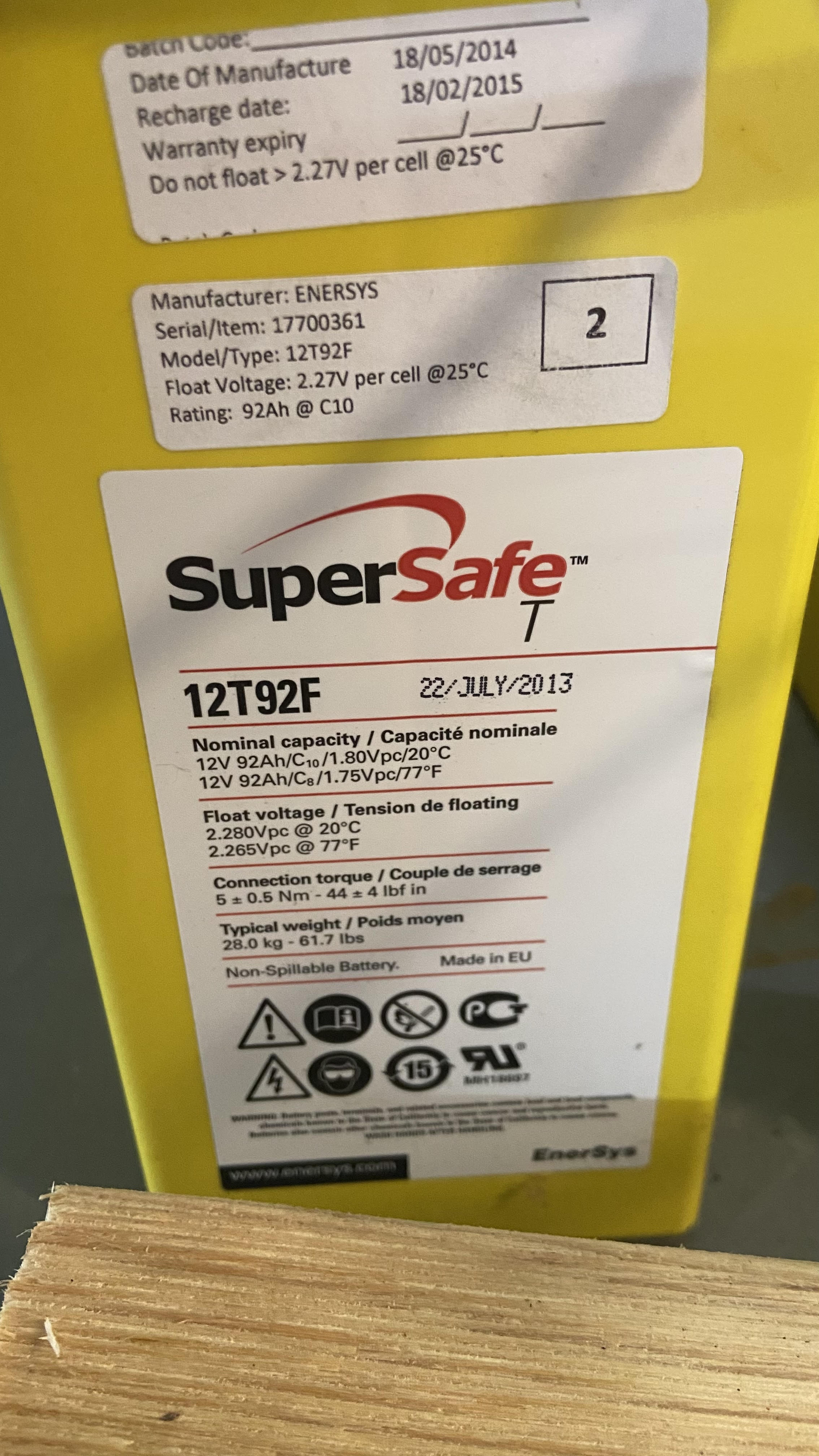Hey all, I have been using a bunch of ex communication hut UPS batteries (see the attached photo).
After lots of googling I have only been able to find basic consumption charts and not much info on the batteries themselves. They work fine however I am wondering if I need to equalize them and if so how often?. Attempts at figuring this out myself has lead me to articles/posts explaining that I do need to equalize... and then the next post saying I should never under any circumstances equalize or it will destroy them.
If anyone knows I would appreciate the help
Spec sheet: 2059.pdf
- Home
- Anonymous
- Sign in
- Create
- Spaces
- Grafana
- Node-Red
- Unsupported topics
- Questions & Answers
- Modifications
- Communauté francophone
- Deutschsprachiger Bereich
- Preguntas en Español
- Explore
- Topics
- Questions
- Ideas
- Articles
- Badges
question
Do my batteries need equalization?
Those are VRLA batteries, so don't equalize them. They don't appear to be designed for regular cycling even, only a recommended Float V is supplied. That doesn't mean you can't cycle them, but I'd be wary of applying too high an Absorb V and have them vent gas (water in effect) you can't replace. Especially as I suspect you have a number in parallel (from a previous post). Imbalance the enemy there, and their age won't help with that.
Thank you for the reply. Thats good to know, appreciate the information. It didn't occur to me that the lack of absorb voltage meant they are not designed for absorb charging.
I have been absorbing them at 14.4 and floating at 13.6 but my charging capacity only allows for about 3-4 amps per battery, so I felt this was fairly safe, would you suggest lowering my absorb voltage further?
Maybe I should be just charging them at 13.6 for BOTH absorb and float?
They'll still charge at 13.6 Float V, but much slower. Depends on the time you have to do it, like a limited length solar day. But I wouldn't push them to 14.4V just for the sake of it. If you can get away with less then do so. Mind you, I only say this because of the number I suspect you have in parallel - don't underestimate this, imbalance is your nightmare-in-waiting. It will express itself as differential batt temperatures, and a touch-test occasionally after a decent charge session is useful. If you can pick the difference by hand you have a problem. It will happen one day, your challenge is to keep that day well into the future. :)
Thanks again,
I have been checking the battery temps by hand while charging and never noticed any of them even warm to the touch.
I have a flir camera so I will take your advice and keep an eye on difference in temperatures, if there are some noticeable hotter than others I can take them out of the bank.
I will reduce absorb voltages and see how low I can get away with.
Thank you :)
If there is liquid electrolyte, yes under normal circumstances would be the answer. But they are second hand so sometimes if they were never equalized in previous service, they could be destroyed when the layer is shed.
It is a tough call. can you check the build up on the plates physically?
If it is not and it is a mat (agm) or gel. So yes there is still electrolyte but it is not liquid. No.
Thanks for the reply. Unfortunately as I said I am not able to tell what is in the battery based on the information I could find online and on the label. I was hoping someone might have used these batteries before and could tell me.
ADDED:
I think as you suggested, if it risks being destroyed, I probably won't risk it.
The only way I could check the buildup on the plates would be to sacrifice one and cut it open but as they are working ok I probably wont do that.
Related Resources
question details
49 People are following this question.
